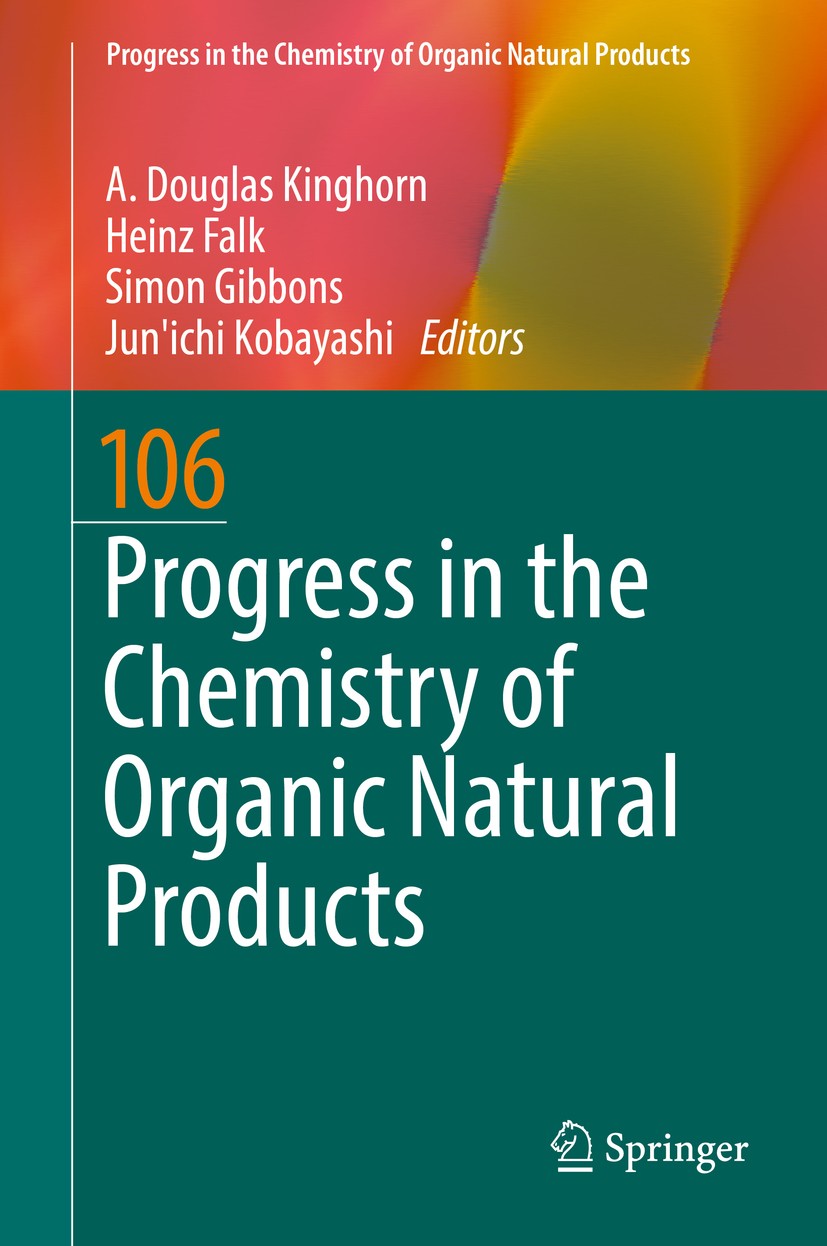| 书目名称 | Progress in the Chemistry of Organic Natural Products 106 | | 编辑 | A. Douglas Kinghorn,Heinz Falk,Jun‘ichi Kobayashi | | 视频video | http://file.papertrans.cn/761/760767/760767.mp4 | | 概述 | Written by recognized authorities in the field.Provides comprehensive and up-to-date reviews in the topic.Part of a well-known series.Includes supplementary material: | | 丛书名称 | Progress in the Chemistry of Organic Natural Products | | 图书封面 |  | | 描述 | The first contribution presents coumarins, the largest group of 1-benzopyran derivatives found in plants. Coumarin chemistry remains one of the major interest areas of phytochemists, especially because of their structural diversity and medicinal properties, along with the wide-ranging bioactivities of these compounds, inclusive of analgesic, anticoagulant anti-HIV, anti-inflammatory, antimicrobial, antineoplastic, antioxidant, and immunomodulatory effects. The second contribution presents a comprehensive survey of the many aspects of PAD biochemistry and physiology. The third contribution gives a comprehensive overview of secondary metabolites from higher fungi, with more than 700 references highlighting the isolation, structure elucidation, biological activities, chemical synthesis, and biosynthesis of pigments, nitrogen-containing compounds, and terpenoids from mushrooms. | | 出版日期 | Book 2017 | | 关键词 | Coumarins; Secondary metabolites; Biosynthesis; Simple coumarins; Peptidylarginine deiminase (PAD) enzym | | 版次 | 1 | | doi | https://doi.org/10.1007/978-3-319-59542-9 | | isbn_softcover | 978-3-319-86647-5 | | isbn_ebook | 978-3-319-59542-9Series ISSN 2191-7043 Series E-ISSN 2192-4309 | | issn_series | 2191-7043 | | copyright | Springer International Publishing AG 2017 |
The information of publication is updating

|
|
 |Archiver|手机版|小黑屋|
派博传思国际
( 京公网安备110108008328)
GMT+8, 2025-12-14 06:48
|Archiver|手机版|小黑屋|
派博传思国际
( 京公网安备110108008328)
GMT+8, 2025-12-14 06:48


